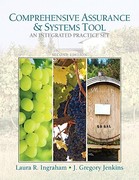Answered step by step
Verified Expert Solution
Question
1 Approved Answer
I have attached the document with the question I need help with. The answer is 1,382 which is checked in green. I need to come
I have attached the document with the question I need help with. The answer is 1,382 which is checked in green. I need to come up with an answer close to that. I understand how to do the first step but the second step is confusing. How to solve the problem is listed below also. Thanks in advance for your help.
 Dublin Pie Company sells cherry pies and apple pies in bulk online. Estimated overhead costs for the year total $592,408. The accountant for Dublin identified the following information for its activity-based costing system. How much total overhead should be assigned to Sales Order 115 for Cherry Pies if it required 8 purchase orders for a total of 421 pies (or units)? Answer to nearest whole dollar without any commas or decimal points eg. 1000 not 1,000.00 Enter a negative number as -10 not (10). Activity Allocation Base Proportion of Total Overhead Cost Purchasing Number of purchase orders 20% Processing Number of units 53% Sales Number of sales orders remaining % The estimated activity level for each type of pie and in total is as follows: Cherry Pies Apple Pies Number of purchase orders 8,373 16,568 Number of units processed 27,748 72,835 1,124 4,166 Number of sales orders Selected Answer: 5,602 Correct 1,382 Answer: 5 Response Feedback Step 1: Calculate the cost per unit for each of the cost : drivers (cost per purchase order, cost per sales order, cost per unit processed. cost per purchase order = (estimated overhead x proportion overhead purchase orders) / total purchase orders for cherry + apple cost per unit processing = (estimated overhead x proportion overhead processing orders) / total units processed for cherry + apple cost per sale = (estimated overhead x proportion overhead sales orders) / total estimated number sales orders for cherry + apple Step 2: Multiple the unit costs from step one by the number of units for Sales Order 115. Note: there is only 1 sales order in this problem, the number of purchase orders and pies processed are given in the problem. Total overhead would be the sum of all three of these overhead costs. (cost per purchase order x number of purchase orders for sale 115) + (cost per unit processing x number of pies units for sale 115) + (cost per sales order x 1 sale)
Dublin Pie Company sells cherry pies and apple pies in bulk online. Estimated overhead costs for the year total $592,408. The accountant for Dublin identified the following information for its activity-based costing system. How much total overhead should be assigned to Sales Order 115 for Cherry Pies if it required 8 purchase orders for a total of 421 pies (or units)? Answer to nearest whole dollar without any commas or decimal points eg. 1000 not 1,000.00 Enter a negative number as -10 not (10). Activity Allocation Base Proportion of Total Overhead Cost Purchasing Number of purchase orders 20% Processing Number of units 53% Sales Number of sales orders remaining % The estimated activity level for each type of pie and in total is as follows: Cherry Pies Apple Pies Number of purchase orders 8,373 16,568 Number of units processed 27,748 72,835 1,124 4,166 Number of sales orders Selected Answer: 5,602 Correct 1,382 Answer: 5 Response Feedback Step 1: Calculate the cost per unit for each of the cost : drivers (cost per purchase order, cost per sales order, cost per unit processed. cost per purchase order = (estimated overhead x proportion overhead purchase orders) / total purchase orders for cherry + apple cost per unit processing = (estimated overhead x proportion overhead processing orders) / total units processed for cherry + apple cost per sale = (estimated overhead x proportion overhead sales orders) / total estimated number sales orders for cherry + apple Step 2: Multiple the unit costs from step one by the number of units for Sales Order 115. Note: there is only 1 sales order in this problem, the number of purchase orders and pies processed are given in the problem. Total overhead would be the sum of all three of these overhead costs. (cost per purchase order x number of purchase orders for sale 115) + (cost per unit processing x number of pies units for sale 115) + (cost per sales order x 1 sale) Step by Step Solution
There are 3 Steps involved in it
Step: 1

Get Instant Access to Expert-Tailored Solutions
See step-by-step solutions with expert insights and AI powered tools for academic success
Step: 2

Step: 3

Ace Your Homework with AI
Get the answers you need in no time with our AI-driven, step-by-step assistance
Get Started


